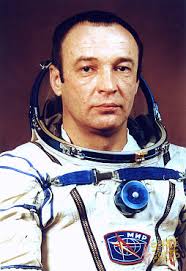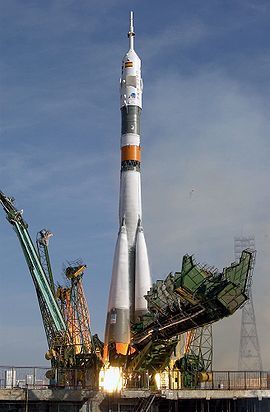Gennadi Manakov
Russian - (RFSA)
Deceased
Date of Birth: June 1, 1950
Date of Death: Sept. 26, 2019
Gennadi Mikhailovich Manakov is a former cosmonaut who commanded two Soyuz flights. He was selected on 2 September 1985 and flew as Commander on Soyuz TM-10 and Soyuz TM-16, retiring on 20 December 1996.
Soyuz-U2 | Soyuz TM-10
Soviet Space Program | RussiaBaikonur Cosmodrome, Republic of Kazakhstan
Aug. 1, 1990, 9:32 a.m.
Status: Success
Mission:
Soyuz TM-10 was the tenth mission and the seventh long-duration expedition to Mir space station. The mission began on August 1, 1990, 09:32:21 UTC, launching Commander Gennadi Manakov and Flight Engineer Gennadi Strekalov into orbit. They docked with Mir two days later. During their stay there, cosmonauts performed an EVA, various station repair and maintenance tasks, and carried out scientific experiments in biology, geophysics, space technology, astronomy etc. They were visited by a Progress M-5 resupply spacecraft and Soyuz TM-11 expedition. The mission concluded with a safe landing back on Earth on December 10, 1990, 06:08:12 UTC.
Low Earth OrbitSoyuz-U2 | Soyuz TM-16
Soviet Space Program | RussiaBaikonur Cosmodrome, Republic of Kazakhstan
Jan. 24, 1993, 5:58 a.m.
Status: Success
Mission:
Soyuz TM-16 was the 16th mission and the 13th long-duration expedition to Mir space station. The mission began on January 24, 1993, 05:58:05 UTC, launching Commander Gennadi Manakov and Flight Engineer Alexander Poleshchuk into orbit. They docked with Mir two days later. During their stay there, cosmonauts performed EVAs, various station repair and maintenance tasks, and carried out scientific experiments in materials research, space technology, astrophysics and earth observation. One of the experiments was the deployment of a 20-m foil reflector, which was a test of a future solar reflector designed to illuminate regions on the Earth's surface. Station crew was visited by several Progress resupply spacecrafts, and welcomed aboard the Soyuz TM-17 crew. The mission concluded with a safe landing back on Earth on July 22, 1993, 06:41:50 UTC.
Low Earth OrbitThe Roscosmos State Corporation for Space Activities, commonly known as Roscosmos, is the governmental body responsible for the space science program of the Russian Federation and general aerospace research. Soyuz has many launch locations the Russian sites are Baikonur, Plesetsk and Vostochny however Ariane also purchases the vehicle and launches it from French Guiana.
Falcon 9
Starlink Group 10-51
Launch Complex 39A - Kennedy Space Center, FL, USAA batch of 29 satellites for the Starlink mega-constellation - SpaceX's project for space-based Internet communication system.
Kinetica 1
Chutian-2 01 & 02
Launch Area 130 - Jiuquan Satellite Launch Center, People's Republic of China2 satellites built by the China Aerospace Science and Industry Corporation (CASIC) for testing operations of Very Low Earth Orbit (VLEO) satellites f…
Long March 11
Shiyan 32 01-03
Oriental Spaceport mobile launch ship - Sea Launch3 Chinese satellites reported to be for "orbital technological testing" purposes. Actual usage not known.
Falcon 9
Starlink Group 11-14
Space Launch Complex 4E - Vandenberg SFB, CA, USAA batch of 28 satellites for the Starlink mega-constellation - SpaceX's project for space-based Internet communication system.
Falcon 9
Starlink Group 6-81
Space Launch Complex 40 - Cape Canaveral SFS, FL, USAA batch of 29 satellites for the Starlink mega-constellation - SpaceX's project for space-based Internet communication system.



